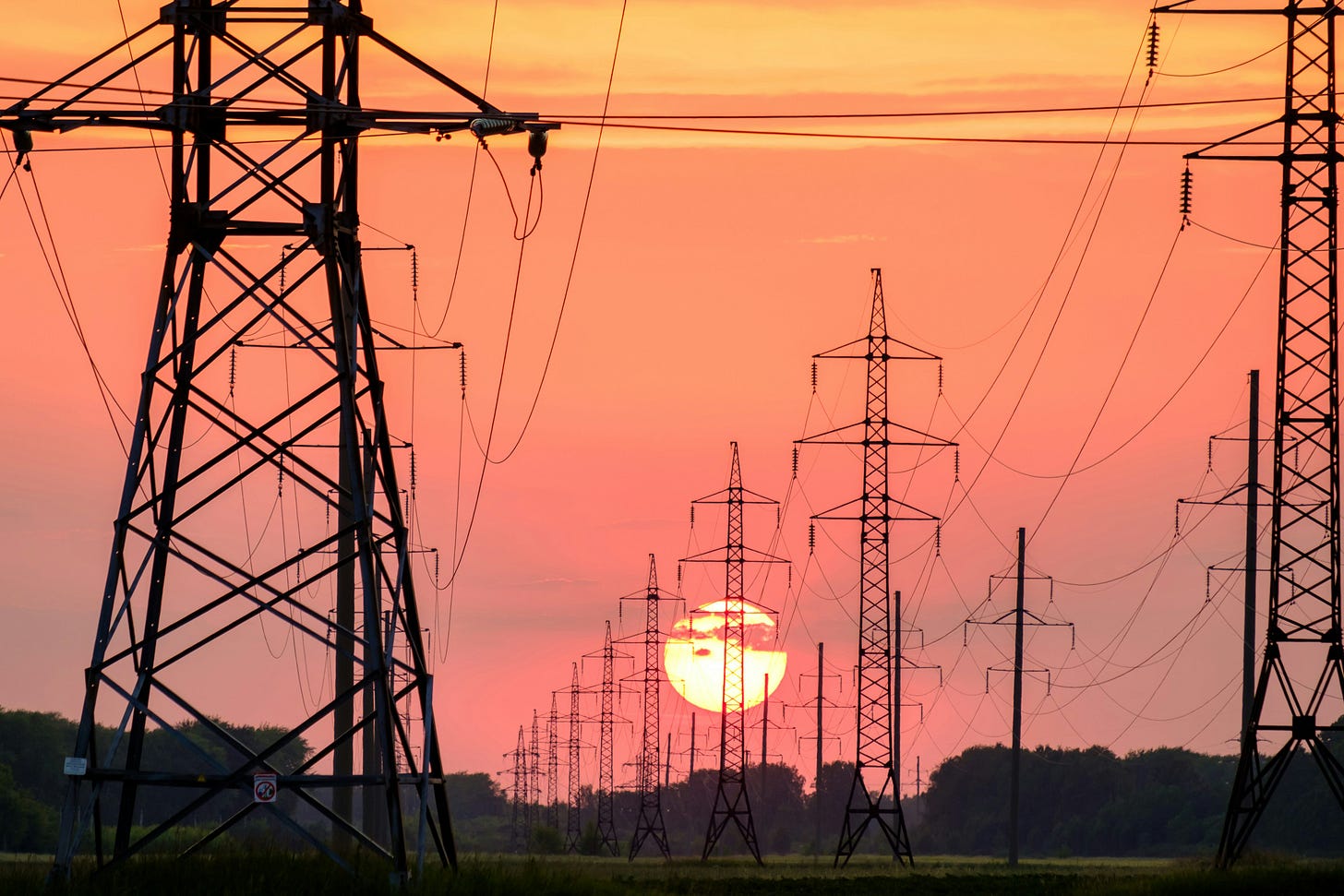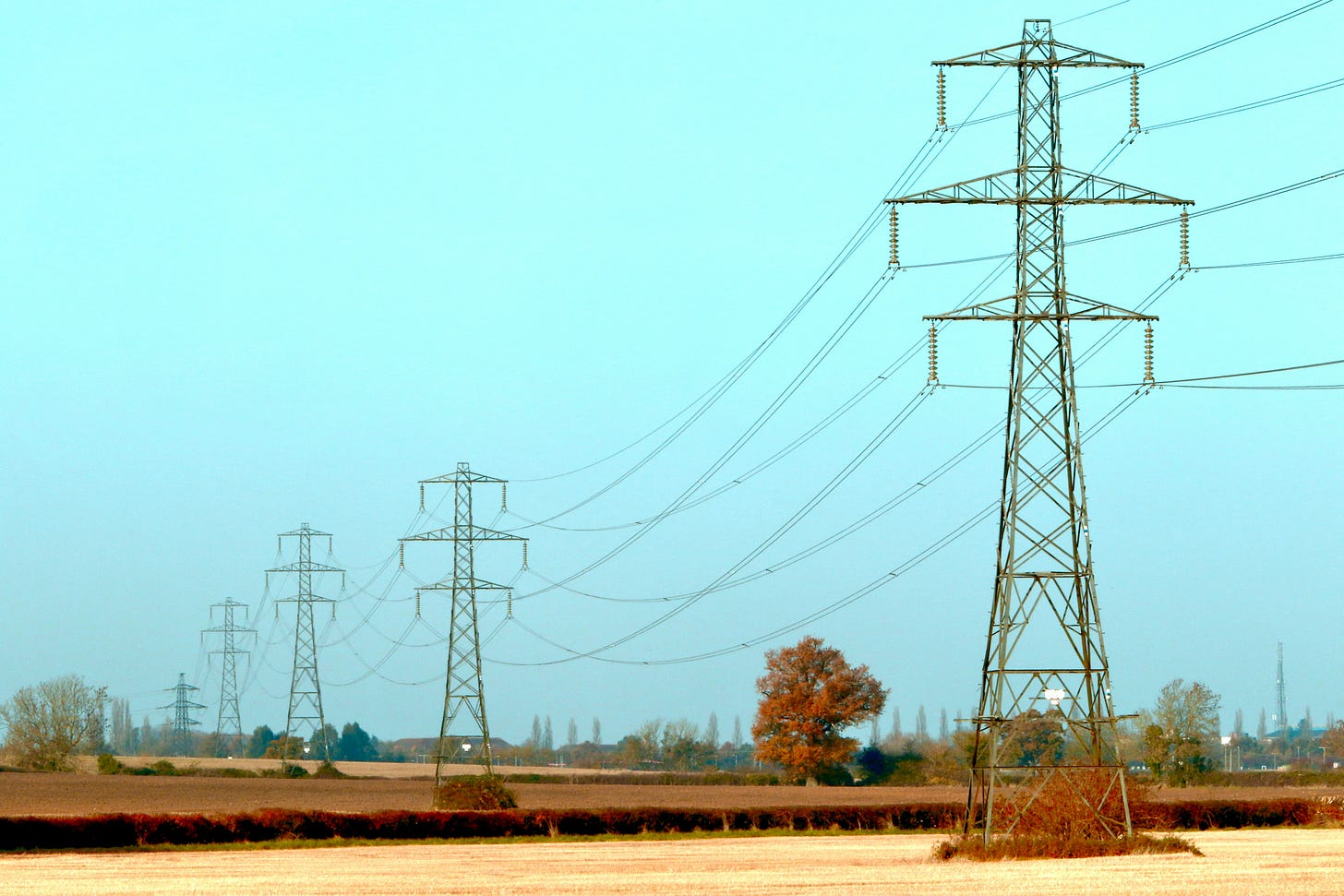The Case for an Independent Transmission Monitor. We need them now.
If we depend on transmission providers to monitor the upcoming transmission costs, it will be like fox guarding the hen house.
The reliability of our nation’s power grid, the economic efficiency of our energy markets, and the advancement of clean energy goals are all intricately linked to one critical component: our transmission infrastructure. Yet, the current state of transmission deployment is marred by monopolistic practices, inefficiencies, and a lack of adequate oversight. Energy policy regulators must champion the establishment of an Independent Transmission Monitor (ITM) to address these challenges and secure a resilient and equitable energy future.
Transmission is a Billion dollar industry not a million dollar industry. An individual 138 kV new transmission line might cost $150 million, but look at transmission needs coming in from all different directions - reliability, economics and public policy. Take NextEra Energy Transmission for example. Notice their pipeline of transmission projects boasts nothing less than $5Billion in each category with a total of more than $40 Billion.
Source - NextEra
Why Transmission Matters
Transmission lines are the lifeblood of our electricity system. They transport energy from where it’s generated to where it’s needed, ensuring that homes stay warm during winter storms and that businesses can operate smoothly. In regions like the Midwest, where weather extremes are becoming more frequent and severe, the ability to transfer energy across states is crucial for maintaining grid stability and reliability.
Source - Unsplash
Beyond reliability, transmission infrastructure plays a vital economic role. By enabling a broader array of renewable energy sources (which have zero fuel costs) to participate in electricity markets, transmission lines help lower carbon emissions and reduce electricity prices. Think of it as the energy equivalent of the interstate highway system, facilitating the efficient movement of electricity much like highways facilitate the transport of goods and services.
Moreover, robust transmission infrastructure is essential for states aiming to increase their share of clean energy. Renewable resources like wind and solar are often located far from population centers, and transmission lines are needed to bridge this gap. Without them, our ambitious clean energy goals will remain out of reach.
The Challenges We Face
Despite its importance, building and optimizing transmission infrastructure faces significant hurdles:
Monopolistic Control: Transmission utilities often hold monopolies over the development of transmission projects. While federal regulations call for competition in projects of a certain size, incumbent utilities frequently dominate, sidelining independent developers and stifling innovation.
Local Focus at the Expense of Regional Needs: Utilities threatened by potential competition tend to prioritize lower-voltage, local transmission projects. These projects, while beneficial to local areas, fail to address broader regional needs, leading to inefficiencies and missed opportunities for greater economic and environmental benefits.
Regulatory Incentives: Current regulations incentivize utilities to build new transmission lines rather than optimize existing ones. Technologies like Dynamic Line Ratings (DLR), which can significantly increase the capacity of existing lines, are underutilized because utilities lack the financial motivation to implement them.
The Solution: An Independent Transmission Monitor
An Independent Transmission Monitor (ITM) can address these challenges head-on, ensuring a more effective and fair transmission system. Here’s how:
Enhancing Competition: An ITM would oversee the competitive bidding process for transmission projects, ensuring transparency and fairness. This would encourage participation from independent transmission developers, leading to more innovative and cost-effective solutions.
Focusing on Regional Benefits: An ITM can balance local and regional interests, preventing the overemphasis on local projects. By promoting investments that deliver broader benefits, an ITM can ensure that our transmission infrastructure serves the greater good.
Promoting Efficiency: An ITM would advocate for the adoption of grid-enhancing technologies like DLR. By prioritizing the optimization of existing infrastructure, an ITM can help reduce the need for new transmission lines, resulting in cost savings for consumers.
Mitigating Conflicts of Interest: Currently, entities like the Midcontinent Independent System Operator (MISO) have conflicting roles. They support their transmission-owning members while also serving regional interests. An ITM would provide independent oversight, ensuring that regional benefits are not compromised by local interests.
Did you know that the MISO Market Monitor expressed concerns about MISO’s Long Range Transmission Planning? The Market Monitor said MISO was studying an “extremely unlikely future”. And “We do not believe it will provide a reasonable basis for identify transmission needs and beneficial transmission investments.”
Source - MISO Independent Market Monitor presentation
Taking Action
To establish an ITM, we need decisive action from state and federal regulators:
Regulatory Support: Federal Energy Regulatory Commission (FERC) must mandate the creation of an ITM, updating frameworks to ensure that an independent body has the authority to oversee transmission planning and development. State Public Utility Commissions (PUCs) must mandate consideration of Grid Enhancing Technologies in transmission line Certificate of Public Convenience & Need (CPCN) proceedings.
Stakeholder Engagement: Engaging all stakeholders—utilities, independent developers, consumer advocates—is crucial to shaping the ITM’s mandate and ensuring it addresses the needs of all parties involved.
Clear Mandate and Authority: The ITM must have a clear mandate to oversee the competitive bidding process, review transmission plans, and advocate for the adoption of grid-enhancing technologies. It should also have the authority to enforce its recommendations.
Transparency and Accountability: Establishing robust transparency and accountability mechanisms is essential. This includes regular reporting on the ITM’s activities and performance, as well as mechanisms for stakeholders to raise concerns and provide feedback.
Source - Unsplash.
Conclusion
The establishment of an Independent Transmission Monitor is a critical step toward a more efficient, reliable, and sustainable energy future. By enhancing competition, ensuring regional benefits, promoting grid efficiency, and mitigating conflicts of interest, an ITM can address many of the current challenges in transmission deployment.
Energy policy regulators have a pivotal role to play in advocating for and supporting the creation of an ITM. By doing so, they can advance the integration of renewable energy sources and ensure that our energy infrastructure is robust and resilient enough to meet future demands.
To read more -
https://www.renewableenergyworld.com/solar/utility-integration/why-ferc-should-mandate-an-independent-monitor-at-pjm/ - Why FERC should mandate an independent monitor at PJM
https://www.renewableenergyworld.com/policy-regulation/ferc-seeks-comments-on-the-role-of-independent-transmission-monitors/ - FERC seeks comments on the role of Independent Transmission Monitors





